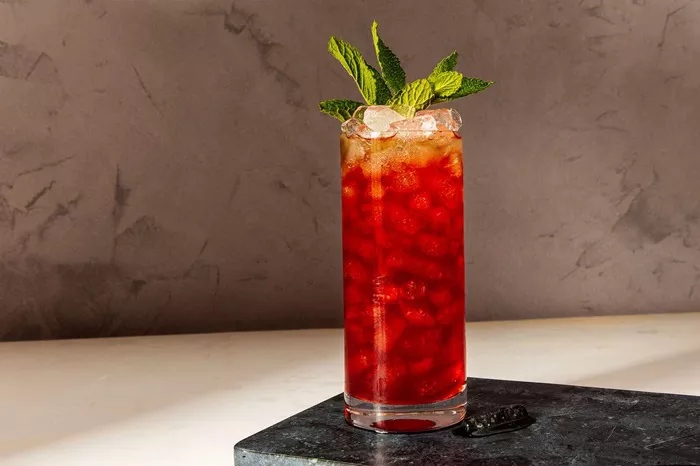Rye whiskey, renowned for its bold and spicy flavors, has carved a significant niche in the world of distilled spirits. Behind every sip of this cherished drink lies a meticulously crafted process that dates back centuries. From the selection of grains to the aging in charred barrels, every step contributes to the distinct character of rye whiskey. In this comprehensive guide, we delve into the intricate journey of how rye whiskey is made, exploring the traditions, techniques, and expertise that define this beloved spirit.
1. Understanding Rye Whiskey: Origins and Significance
Before delving into the production process, it’s essential to grasp the essence of rye whiskey. Originating in the northeastern United States, rye whiskey holds a storied legacy dating back to the colonial era. Its roots can be traced to European settlers who brought their distillation methods to America, where rye was abundantly cultivated. Over time, rye whiskey gained prominence, becoming a symbol of American craftsmanship and heritage. Today, it stands as a testament to tradition and innovation in the realm of spirits.
2. Selecting the Finest Grains: The Foundation of Flavor
Central to the production of rye whiskey is the careful selection of grains. Unlike other types of whiskey, which may use a variety of grains, rye whiskey must contain a significant proportion of rye grain in its mash bill. Typically, this grain mixture consists of at least 51% rye, complemented by corn, barley, or wheat. The choice of grains significantly influences the flavor profile of the final product, with rye imparting its characteristic spiciness and complexity. To ensure quality and consistency, distillers meticulously source grains from trusted suppliers, prioritizing freshness and purity.
3. Milling and Mashing: Transforming Grains into Mash
Once the grains are selected, the next step in the journey of rye whiskey production involves milling and mashing. This process entails grinding the grains into a coarse powder, which is then combined with hot water in a large vessel known as a mash tun. The hot water activates enzymes present in the grains, initiating the conversion of starches into fermentable sugars. As the mash steeps, enzymes break down complex carbohydrates, releasing sugars that will serve as the fuel for fermentation. The resulting mixture, known as the mash, forms the foundation for the subsequent stages of distillation.
4. Fermentation: Transforming Sugars into Alcohol
Fermentation is a critical stage in the production of rye whiskey, where the sugars extracted from the mash undergo transformation into alcohol. Yeast, a microorganism essential for fermentation, is introduced into the mash, initiating a chemical reaction that produces alcohol and carbon dioxide. As the yeast consumes sugars, it generates heat and releases byproducts, including ethanol and flavorful congeners. This process typically lasts several days, during which the mash ferments in temperature-controlled tanks. The duration and temperature of fermentation play a crucial role in shaping the final flavor profile of the whiskey, with longer fermentations often yielding more complex and nuanced spirits.
5. Distillation: Crafting the Spirit
Distillation is the art of separating alcohol from the fermented mash through heating and condensation. Rye whiskey undergoes a double distillation process, traditionally utilizing copper pot stills. During the first distillation, the fermented mash is heated, causing alcohol vapors to rise and pass through a series of copper plates or trays. These plates help refine the spirit, removing impurities and enhancing its purity. The resulting liquid, known as “low wine,” undergoes a second distillation to further concentrate the alcohol content and refine the flavor. This meticulous distillation process is instrumental in capturing the essence of the rye grain while achieving the desired strength and character of the whiskey.
6. Aging in Charred Oak Barrels: Infusing Flavor and Complexity
One of the most distinctive aspects of rye whiskey production is its aging in charred oak barrels. These barrels, typically made from American white oak, serve as vessels for maturation, imparting flavor, color, and texture to the spirit. Before filling, the barrels undergo charring, where the interior is exposed to an open flame, caramelizing sugars and creating a layer of charred wood. This charred layer acts as a filter, removing impurities and infusing the whiskey with rich caramel, vanilla, and spice notes. As the whiskey ages in the barrels, it undergoes a transformative journey, interacting with the wood and undergoing chemical reactions that enhance its complexity and depth of flavor. The duration of aging varies depending on the desired style of whiskey, with some rye expressions maturing for several years to achieve optimal balance and character.
7. Blending and Bottling: Crafting the Final Product
Once the aging process is complete, the rye whiskey is ready for blending and bottling. Master blenders meticulously sample and select barrels from various aging lots, combining them to achieve the desired flavor profile and consistency. Blending allows distillers to balance the intensity of flavors, harmonizing spicy rye notes with subtle hints of oak, caramel, and spice. After the final blend is crafted, the whiskey is carefully filtered to remove any sediment or impurities before being bottled and sealed. Each bottle represents the culmination of years of craftsmanship and expertise, capturing the essence of the distillery’s heritage and tradition.
8. Conclusion: A Time-Honored Tradition
In conclusion, the production of rye whiskey is a labor of love that combines tradition, innovation, and expertise. From the careful selection of grains to the art of aging in charred oak barrels, each step in the process contributes to the rich tapestry of flavors that define this beloved spirit. As consumers savor the distinctive notes of spice, caramel, and oak in their glasses, they partake in a tradition that spans generations and celebrates the craftsmanship of the distiller. Whether enjoyed neat, on the rocks, or in classic cocktails, rye whiskey continues to captivate enthusiasts worldwide, serving as a timeless tribute to the enduring legacy of American distilling.


